Phở Cuốn Chay (Vegetarian Pho Rolls)
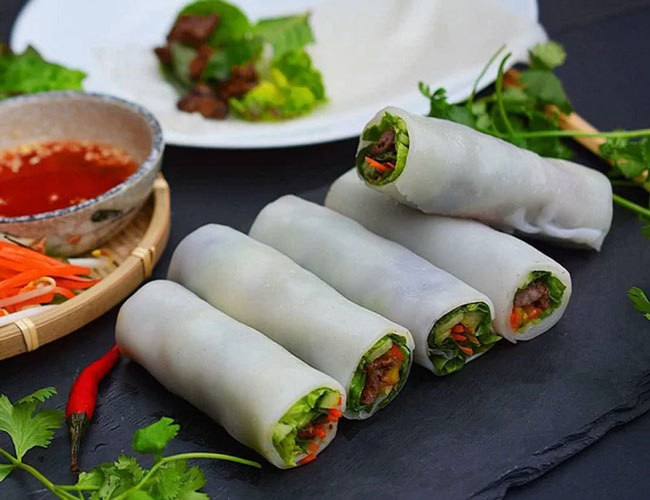
Ingredients
Rice Paper Batter
-
150g rice flour
-
40g cornstarch
-
40g tapioca starch
-
600ml water
-
½ tsp salt
-
1 tbsp cooking oil (optional – to prevent sticking when steaming)
Filling
-
100g vegan sausage (chả chay – sliced or shredded)
-
10g dried shiitake mushrooms (soaked and sliced)
-
10g dried wood ear mushrooms (soaked and shredded)
-
50g lettuce leaves
-
10g scallions (chopped)
Dipping Sauce
-
1 tbsp vegan seasoning powder
-
2 tbsp sugar
-
1 tbsp lime juice
-
4 small chili peppers (sliced)
-
5g garlic (minced)
-
5g ground black pepper
Nutritional Information
For: Vegetarians and Vegans
Calories per serving: ~ 120–160 kcal (per 1 roll ~60–70g)
Key Nutrients:
1. Healthy Carbs (20–25g)
- Source: Rice flour + cornstarch + tapioca starch
- Benefits: Provides quick energy, easy to digest, and forms the soft rice sheets essential to phở cuốn.
2. Plant-Based Protein (4–6g)
- Source: Vegan sausage + shiitake mushrooms + wood ear mushrooms
- Benefits: Supports tissue repair, muscle maintenance, and helps with fullness in plant-based diets.
3. Natural Fiber (2–3g)
- Source: Lettuce + mushrooms
- Benefits: Promotes digestion, supports gut health, and helps regulate blood sugar levels.
4. Antioxidants & Phytochemicals
- Allicin (garlic): Known for antibacterial and immune-supporting properties.
- Capsaicin (chili): Supports metabolism and has anti-inflammatory benefits.
- Polysaccharides (shiitake mushrooms): May support immune health and reduce cholesterol.
5. Essential Minerals & Micronutrients
- Iron (wood ear mushrooms): Supports oxygen transport in the blood.
- Calcium + Magnesium (leafy greens): Important for bone health and muscle function.
- Potassium (mushrooms): Helps maintain fluid balance and nerve signals.
1. Prepare the Ingredients
Begin by prepping all ingredients for your vegetarian pho rolls:
-
Vegetarian ham (chả chay): Cut into thin strips.
-
Wood ear mushrooms & shiitake mushrooms: Soak in water until soft, then slice into thin strips.
-
Green onions: Wash and finely chop.
-
Garlic & chili: Mince finely.
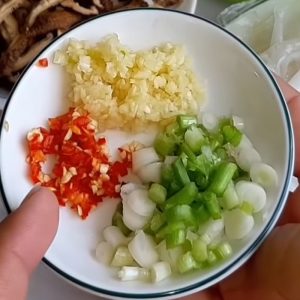
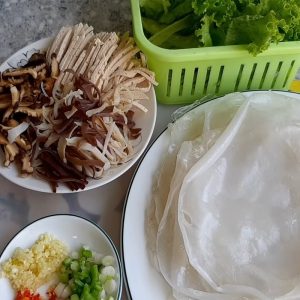
2. Make the Pho Sheets
- In a large bowl, mix rice flour, cornstarch, and tapioca starch. Add 600ml of water and stir until smooth. Strain the mixture twice through a fine sieve to achieve a silky batter.
- Next, add ½ teaspoon of salt, stir well, and cover the bowl to rest for 2 hours.
- After 2 hours, skim off the clear water that forms on top, then replace it with an equal amount of fresh water. Stir and cover again. Repeat this resting and replacing step two more times to help the batter become more elastic and reduce any unpleasant flour smell.
- Finally, stir in 1 tablespoon of vegetable oil, mix well, and steam the batter into thin rice sheets using a steamer.
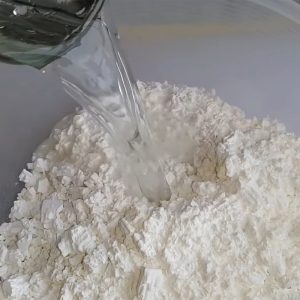
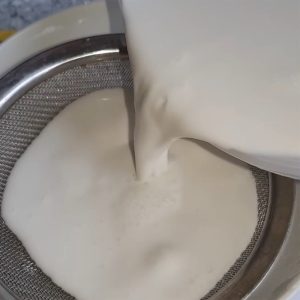
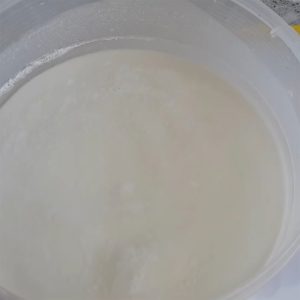
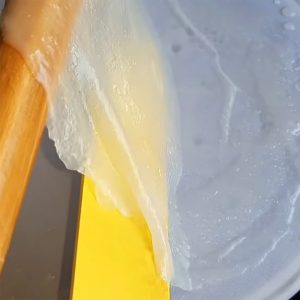
3. Stir-Fry the Filling
Sauté chopped green onion in hot oil until fragrant. Then add the vegetarian ham, wood ear, and shiitake mushrooms. Stir-fry evenly with a bit of seasoning to taste.
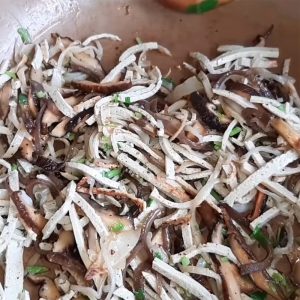
4. Assemble the Rolls
Place a pho sheet on a clean, flat surface. Add lettuce, cilantro, and a spoonful of the stir-fried filling. Roll tightly into a neat log.
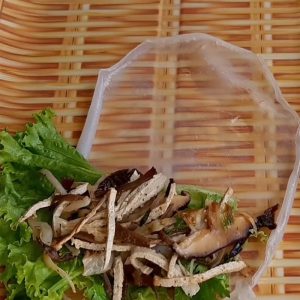
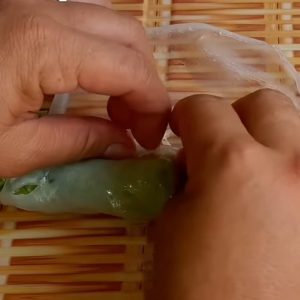
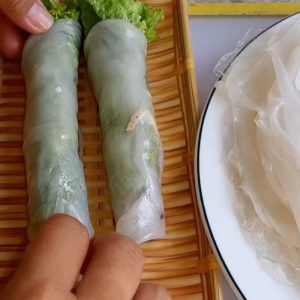
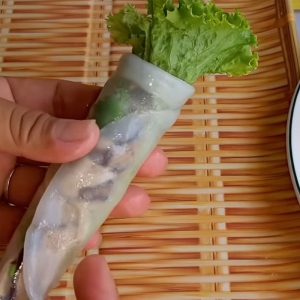
5. Make the Dipping Sauce
In a small pot, combine 3 tablespoons of vegetarian fish sauce and 2 tablespoons of sugar. Stir and gently heat until dissolved. Turn off the heat, then add 1 tablespoon of lime juice along with minced garlic and chili.
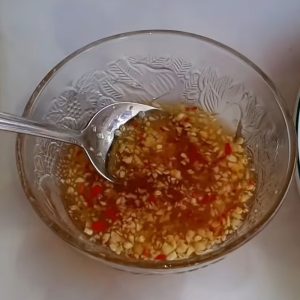
6. Final Dish
Your vegetarian pho rolls are visually appealing with fresh green lettuce peeking through silky white rice wrappers. Each bite offers a balance of chewy rice sheet, crispy filling, and the sweet-sour-savory dipping sauce that keeps you coming back for more.
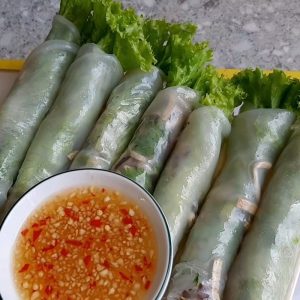
The Story Behind Pho Cuon – When Pho Left the Bowl
It’s said that pho cuon (fresh pho rolls) first appeared in the early 2000s in Ngu Xa Street, Hanoi—a place known for its many pho restaurants. One evening, a pho shop ran out of broth while customers kept coming in. Not wanting to turn them away, the owner came up with a quick fix: instead of serving noodle soup, they used the same pho rice sheets to wrap stir-fried beef and fresh herbs, then served it with a sweet-and-sour dipping sauce.
Surprisingly, this improvised dish became a hit. Light, refreshing, and easy to eat, it was exactly what people didn’t know they were craving. What started as a spontaneous solution soon became a beloved standalone dish in Hanoi’s vibrant food scene.
Pho Cuon – A Modern Twist on Northern Vietnamese Cuisine
Unlike ancient dishes like bun thang or cha ca, pho cuon doesn’t carry centuries of tradition. Instead, it’s a testament to Vietnamese culinary creativity. From its humble beginnings, pho cuon has evolved with countless variations—filled with beef, shrimp, tofu, or mushrooms.
The soft rice sheets paired with fresh greens, flavorful fillings, and a zesty dipping sauce make pho cuon the perfect choice for hot summer days. It’s light yet satisfying, simple yet elegant—proof that even modern street food can capture the soul of a culture.
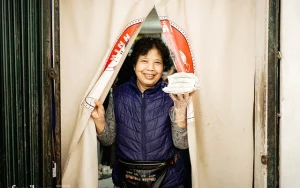
(Portrait of the “mother” of Hanoi Pho rolls – Mrs. Vu Thi Chinh)